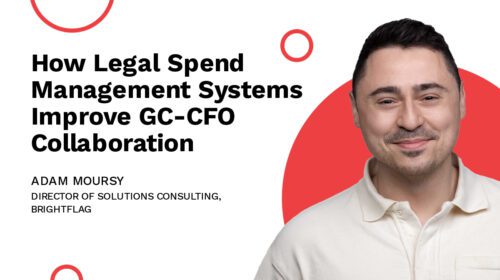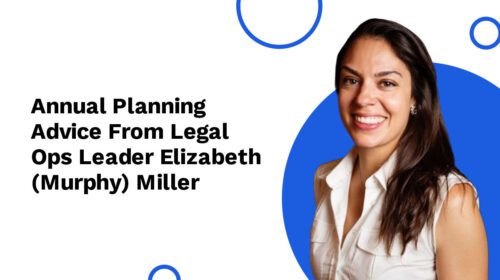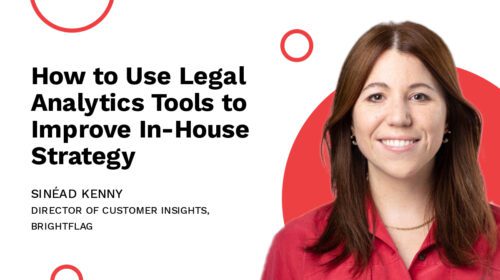The Way to More Productive, Predictable Legal Budgeting
The Challenges and Impacts of Legal Budgeting
Budgeting is a cornerstone of corporate finance. It simultaneously sets the expectation for what should be spent, and establishes a means of measuring what actually is.
The challenge with corporate legal services is that the work inherently defies neat and predictable calculations. After all, how are you supposed to budget if the majority of your expenses are incurred when responding to unforeseen events? And even after a matter is brought to your team’s attention, how can you estimate cost if strategy, duration, and outcome are still up in the air?
There are no easy answers to either question. Which makes it no surprise that legal spend management has historically been less precise than Finance or Legal would prefer.
There’s hope to be found in two facts, however. First, consistent adoption of a few fundamental habits can take you further than you probably think. And second, specialized software has arrived to make estimating, controlling, and reporting legal spend so much simpler.

Now, let’s help you find faster and smarter answers to the legal budgeting questions that are always top of mind.
How Much Should We Be Spending?
Behavior has a funny way of conforming to expectations, so make sure yours are clear from the start. Proceeding without a budget immediately cedes a certain degree of control whereas even budgets that ultimately get overrun can still inspire accountability and generate useful feedback.
At a high level, there are two complementary budgeting styles at your disposal:
Top-level Budgets
Set a fiscal-year target for the entire team, for an entity, for a business department, for a matter category, for a matter group, and/or for a law firm. (Ex. $500,000 for HR in FY 2021.)
Matter-level Budgets
Set granular expectations for the life of a matter, for each matter phase, for each law firm working on a matter, or for each business quarter. (Ex. $1 million for Matter A in its entirety, with less than than $300,000 incurred pre-trial.)
Setting top-level budgets, specifically for the entire team, is by far the most common practice. Most legal departments are missing a significant cost control opportunity, however, by leaving the majority of their matters without any more specific budget applied. Considering a fear of budget inaccuracy is almost certainly at the root of this budget inconsistency, the real question is how to pick the “right” number.
Leveraging Data
The answer is to rely on historical data, and in particular, detailed classifications of the time spent and fees charged by your law firms.
Since 2014, Brightflag has been training its proprietary machine learning engine to read and interpret legal invoices with increasing accuracy. By transforming narrative descriptions into structured data, we provide corporate legal teams with the context they need to set budgets with confidence.
For example, imagine you’re about to begin litigation proceedings similar to three other matters you’ve managed in recent years. Using Brightflag, you can see how each of those analogues played out in terms of:
- Time spent on individual phases, tasks, and activities
- Seniority of timekeepers who did the work
- Fees charged individually (or blended hourly)
As you can see, Brightflag already makes it easy to set budgets with confidence using historical data as a guide.
How Much Have We Spent Relative to Our Expectations?
Would spending $10 million be a welcome result or a fireable offense? It’s all relative to expectations. So given the range of those potential reactions, spend-versus-budget is a metric you’ll want to monitor early and often.
Historically, legal ops professionals have had the unenviable task of retrieving the component parts (approved invoices, pending invoices, and accruals) from several different sources and assembling them into a coherent whole.
Brightflag simplifies budget reporting by capturing all of the relevant context on a single screen that always reflects up-to-the-second data.
Brightflag also shows how many matters are rolling up to the budget. This is a helpful tool for understanding and driving adoption of matter budgets, and users can view the list of matching matters and take appropriate action.
How Much More Do We Anticipate Having to Spend?
Three things are true about every financial forecast. On the first day it’s equal to the budget. On the last day it’s equal to the actual spend. And on every day in between there’s at least a little uncertainty.
So what would really help calm the nerves of any GC or CFO is a forecast that clarifies what will be spent but hasn’t been… yet.
Most organizations fall well short of that gold standard due to a reliance on one of two faulty techniques:
“Peanut Butter Math”
The first misstep comes from what we affectionately refer to as “peanut butter math” — taking what you’ve spent so far and spreading a proportional amount evenly over the remaining time.
If you’re halfway through the fiscal year, for example, just double the actual spend and maybe add 10% to account for the unknown. In this case, the obviously risky assumptions negate the understandably appealing simplicity.
Individual Forecasts
The other approach is to ask the people who are closest to the work—your attorneys and law firms—to provide individual forecasts. This exercise is far from an exact science, however, and the manual coordination requires a time commitment most teams would hesitate to make.
Leveraging A.I. for Legal Budgeting
The most sustainable solution actually comes from A.I., a technology with legal operations implications that extend far beyond invoice review.
Because Brightflag’s A.I. classifies all of the work being done by your law firms, and by other Brightflag customers’ law firms, it can make informed predictions about future spend. In fact, Brightflag automatically generates a 95% confidence forecast range for each top-level budget. If Brightflag’s AI predicts that the budget will be exceeded, it will even tell you the date on which that’s most likely to happen.
Our end goal is to make it easier than ever to take preventive or corrective action when it appears likely that a budget will be exceeded. After all, once a law firm has performed work on your behalf, there’s only so much you can do to control costs.
Learn the Keys to Successful Legal Budgeting
From budgets to billing guidelines to benchmarks, there’s a wide range of levers you can pull for tighter legal cost control. Confirm which ones are (and aren’t yet) working in your favor with help from our Complete Legal Cost Control Checklist.
And if you’re curious to know more about how Brightflag can help you streamline your legal budgeting process, book a demo today.



